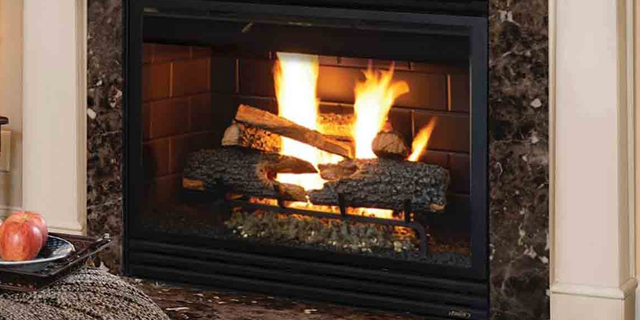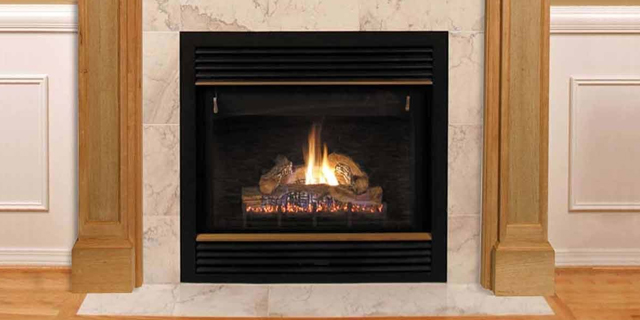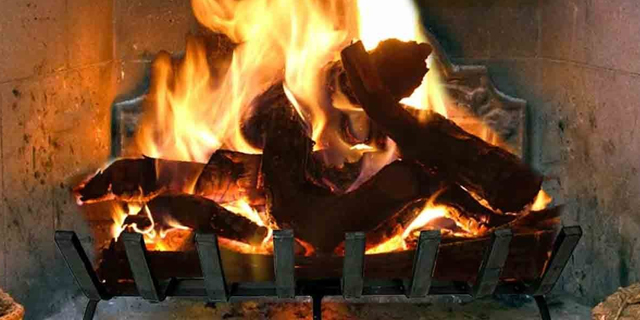No matter if you are new to owning and operating a fireplace or if you are a veteran, there are some fireplace basics that everyone should know. When having an issue with your fireplace it is easiest to convey that issue when you know what you are talking about and can explain exactly what is happening.
Today I am going to go over some fireplace terminology that you should be familiar with, the types of fireplaces, fuel choices, and basic fireplace products.

Basic Fireplace Terminology
It can be overwhelming when you are talking to a professional or even reading fireplace articles when you are not familiar with what the terms they are using refer to. Here are some basic fireplace terms that are used frequently.
Hearth – refers to the area in front of the fireplace opening but is often used to refer to the whole fireplace area.
Firebox – the area that contains the actual fire, can be constructed of fireproof bricks mortared together or a metal box lined with fireproof ceramic (most prefabricated fireplaces are constructed this way).
Flue – the inner chimney shaft that is the exhaust of the firebox. A chimney flue that works properly will draft the smoke up and out of the firebox without it getting into your home.
Brick and Mortar – refers to the type of fireplace that is constructed of fireproof bricks and mortared together. These fireplaces are extremely heavy and require support from the top all the way to the ground.
Prefabricated – a factory constructed firebox, most commonly gas fueled, that uses metal pipe or flex liner to exhaust. This type of fireplace is much lighter and does not require a traditional chimney.
Throat – the opening to the flue at the top of the firebox.
*Damper *– the mechanism in the opening that allows you to control the amount of air flow going escaping up the flue.
Types of Fireplaces

Now that you have some basic knowledge of the language that fireplace owners speak, it is time to dig a little deeper into what the different fireplace types are. There are 4 different types of fireplaces that I am going to go over: wood burning, Direct Vent Gas, Vented Gas, and Vent Free Gas.
- Wood Burning Fireplaces: mostly masonry built fireplaces that use firewood as the fuel source. Wood burning fireplaces require much more work than the other fireplace types. Work such as cutting & stacking firewood, hauling firewood in the house regularly, adding fuel to the fire, cleaning the ash out of the firebox, building efficient fires, and more. Wood burning fireplaces are not for every homeowner.
- Gas Fireplaces: come in vented or vent free models and are mostly prefabricated fireplaces. You can however turn a wood burning fireplace into a gas fireplace with the help of a gas professional if you would like. Prefab gas fireplaces are a great choice if you want to add a fireplace to an old construction home. Gas fireplaces are very easy to maintain. You just simply turn the gas on when you want a fire and light the pilot. Some gas fireplaces pilot kits are available with a remote so a beautiful fire is just a push of the button away.
- Electric Fireplaces: these are great for supplying heat to one room. An electric fireplace is essentially a large space heater. This type of fireplace is used by many homeowners when the look of a fireplace is wanted but not the hassle of a home remodel. Or there may be a room in your home that does not have the heat vented to it very well and you want to utilize it more but need to be able to heat it better. An electric fireplace is a good choice for this and it will not be as unsightly as a space heater just placed anywhere in the room.
Know the different Fireplace Products

Take a look at the fireplace market. It does not only consist of building materials for fireplaces. The market consists of all types of accessory products for a fireplace as well. Deciphering what accessories you need to have on hand to make your fireplace functional and what ones are just occasionally nice to have is not an easy task when you are not familiar with the different products and their uses. So let’s take a look at some different fireplace accessory products.
Fireplace Grate: if you have a wood burning fireplace a grate will be a definite must! My recommendation though is to take a look at the warranty and the construction materials. When burning frequently on a fireplace grate it is inevitable that they will eventually burn through but if you buy a grate like the Lifetime Fireplace Grates you won’t have to worry about this. When the grate burns through, and it will, you simply make a call and get the warranty process started for a replacement to be sent to you. The warranty is a wonderful feature adding to the already excellent quality of the product.
Gas Log Sets – If you have a gas fireplace or are installing a gas fireplace you will need a gas log set. Gas logs are very brand specific so you want to make sure that if it is just the logs you are in need of replacing that you still know exactly what brand of burner and pilot system that you currently have installed. One other thing to know is whether you have a vented or vent free gas fireplace because that will also determine that you get the right log set.
Firewood Rack – I recommend having a small or medium firewood rack indoors to keep a good amount of firewood readily available. Having a firewood rack indoors eliminates you having to open and close the door every time that you need to get an arm load of wood for the fire and it will also cut down the number of times that you have to clean up the mess from hauling firewood in.
Fireplace Tools – Have a set of fireplace tools on your fireplace hearth is going to make tending to your fire much easier and cleaning up too. Most fireplace tools include a poker, shovel, broom, and a pair of tongs. The poker and the tongs are good for when adding logs and moving the logs where you want them. The broom and shovel are going to be useful when cleaning the ashes out of the firebox or to sweep up the debris from adding logs to the fire.







